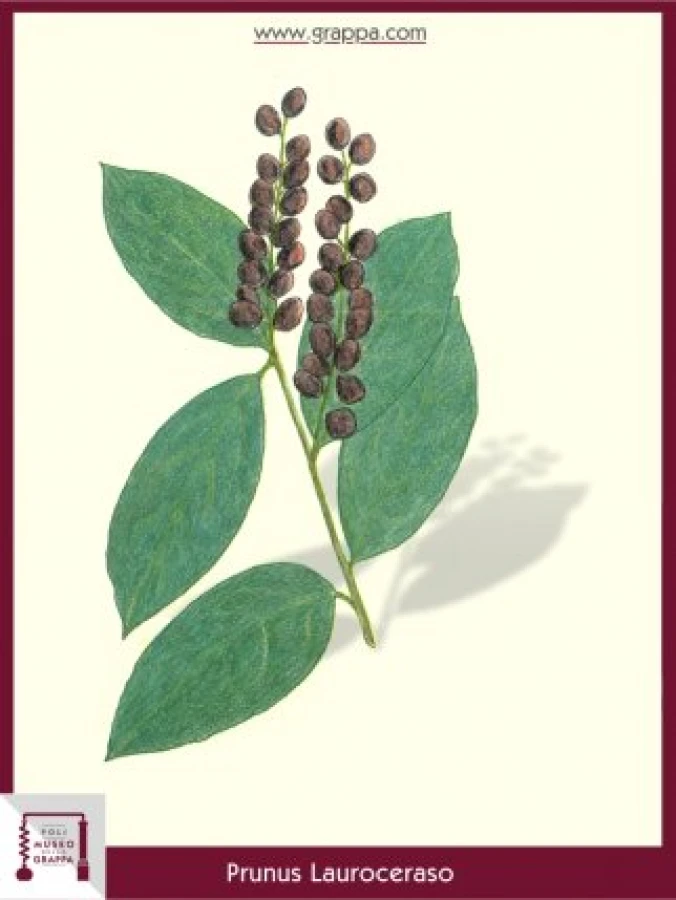A "poisonous" Grappa
Cherry Laurel
A "poisonous" Grappa
Plant:
Cherry Laurel
Plant Part:
fruit
Plant Properties:
aromatic, astringent, digestive, antispasmodic, spasmolytic, sedative
Description:
Those fruits, which resemble the cherries and laurel leaves, suggest already the name of the species "cherry laurel", a plant belonging to the rose family and therefore to the genus Prunus and according to some authors is originally from the Middle East and was imported 1546 as an ornamental plant to Europe.
Other authors, however, deny this message and claim that cherry laurel was already known to the Romans, so much that Pliny himself described in detail the strengthening effects of it's water.
The water "Coobata" of cherry laurel indeed, obtained from the distillation of the leaves, has been known for its strong toxicity since the 18th century.
It contains a substance called "laurocerasina", which splits up itself due to the diastatic enzyme (secretion of the digestive tract) and releases hydrogen cyanide: a poison of well-known toxic capacity.
The fruit or the pulp contains traces of the poison, but in so small doses that there is usually no reason to worry. The exact opposite, the traces of laurocerasina (recognizable by the mild taste of bitter almonds) can be regarded as extremely useful.
A Grappa of the cherry laurel is in any case a good digestive and antispasmodic, especially since it has a pleasant taste reminiscent of cherry and a nice brown color.
Ingredients:
- 1 kg fruits of laurel cherry
- 250 g sugar syrup
- the bowl of a whole lemon
- 1 liter of Grappa
Preparation:
The preparation of a Grappa is relatively simple: 1 kg of fruit, 250 g of sugar syrup, the peel of a whole lemon and a liter of Grappa.
The whole mixture should rest for two months in the sun and age for other two months after filtration.


